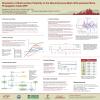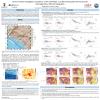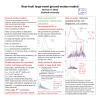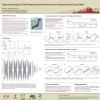Poster #216, Ground Motions
Displaced rocks as an indicator of ground motion during the 4 July 2019 M6.4 Ridgecrest earthquake
Poster Image:

Poster Presentation
2020 SCEC Annual Meeting, Poster #216, SCEC Contribution #10624 VIEW PDF
ce. We developed a rubric and GIS routine to measure, locate, and describe displaced rock measurements in the field. At each measurement site, we recorded clast dimensions, displacement type, magnitude and azimuth, substrate type, slope gradient and aspect, and location relative to the surface rupture trace. Preliminary results suggest that the prevalence of displaced rocks strongly depends on substrate type, rock size and density, fault complexity, local topography, and proximity to the rupture. These results suggest ground motion clearly attenuates on a meter scale moving away from the fault.
SHOW MORE
SHOW MORE
































































